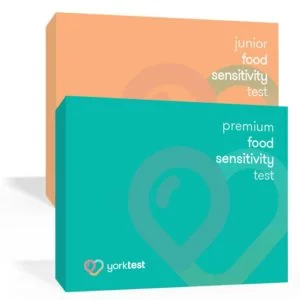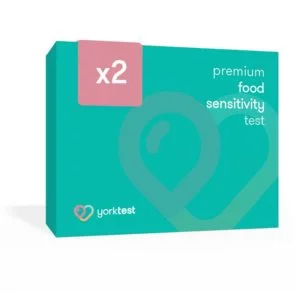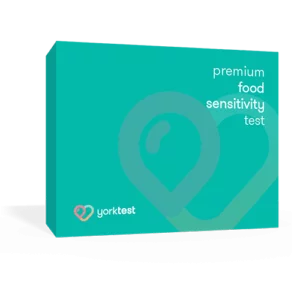Commonly, if you have a food sensitivity your body may react and cause unwanted symptoms. If a food sensitivity is present, the food may contribute to stomach pain, bloating and other forms of digestive issues, or even exhibit other symptoms such as fatigue and migraines. If you are experiencing these symptoms, your physician or dietician will often advise you to follow a food sensitivity elimination diet whilst keeping a food diary.
What is an elimination diet?
An elimination diet involves removing foods from your diet to which you suspect your body is reacting negatively. The foods are later reintroduced, one at a time, while you look for trigger foods that show a reaction. More often than not, your body will be sensitive to numerous foods, sometimes even up to five or six.
Elimination diets can take a significant period of time and can be quite difficult in narrowing down which foods are ailing us. As we typically eat meals consisting of many different foods and ingredients, it’s not always obvious which part of a meal is causing the problem. Nevertheless, if you keep a food diary, you may start to identify certain meals that cause the most discomfort and therefore which foods may be the culprits of your food intolerance or sensitivity.
Everyone is different with unique experiences when it comes to food and how it affects our bodies; therefore, we recommend taking our Premium Food Sensitivity test to help identify exactly which foods you react to before embarking on an elimination diet. This will help not only identify particular foods and food groups that you should eliminate, but also which foods you shouldn’t swap out for if they’re not a part of your regular diet. For instance, you may want to eliminate dairy, but you could have an unknown sensitivity to certain tree nuts so swapping out for a nut milk could aggravate another sensitivity.
How to do an elimination diet
People tend to begin their elimination diet by removing common food sensitivity culprits such as gluten, dairy and wheat. However, going gluten or dairy free may not be right for you. There are many unusual trigger foods that can cause sensitivity symptoms such as lentils, carrots, almonds and even yeast – which would commonly go unnoticed through an elimination diet.
Using your results from your food sensitivity test, however, you can take out all of the guesswork to guide your elimination diet, making it easier to find what problematic foods you’re sensitive to. At YorkTest, we present your results in a traffic light system from red being a high reactivity to green being normal reactivity – this will help you to prioritise the foods that you may want to include or remove to build a food diet plan that works for you.
Additionally, we advise working closely with one of the YorkTest nutritionists to continue your food journey. A nutritional therapist consultation will help you to align your diet choices with your elimination diet, with the aim to help you to repair your relationship with food and drink.
The reintroduction phase
It’s also important to note that a food sensitivity is different from a food allergy; they don’t always have to last forever. During the elimination phase, your gut and immune system can repair itself so that you can enjoy those eliminated foods once again.
Working closely with your doctor and nutritional therapists, you may even want to take another food sensitivity test to see if your sensitivities have subsided. Once you’re given the go-ahead, you can begin the reintroduction phase of your elimination diet. It is still important to monitor what you eat and any symptoms that crop up as you slowly introduce those foods back into your diet.
“A traditional elimination diet without a test can take months to complete properly, allowing enough time to see the effects of cutting out each food in your diet one at a time; the elimination phase for each food type takes around 3 weeks, and then you’ll have to slowly reintroduce suspected trigger foods and carefully watch out for any symptoms,” says Dr Gill Hart, YorkTest Scientific Director.
“Alternatively, with a Food Sensitivity Test, you’ll get your results from YorkTest within 7 days, so you’ll get real, scientific evidence as to which foods you’re sensitive to straightaway. From here you can start making changes to your diet and testing alternatives to start living healthier and happier.”
It’s important to take care when taking on any food diet, but especially a food elimination diet as you need to make sure your body is still getting the right nutrients it needs. By using a food sensitivity test and guidance from your medical doctor and YorkTest nutritionists, you can ensure that your body is getting the nutrition it needs while also improving your relationship with food once again. It’s time to take control of your nutrition, health and wellbeing today.











